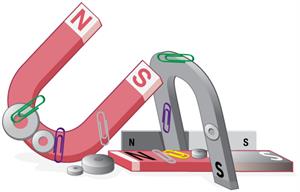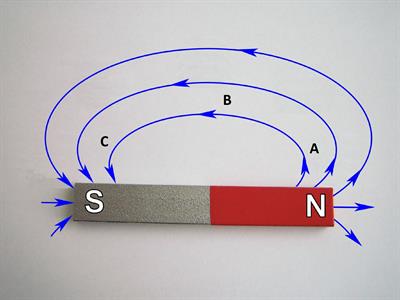PDF chapter test TRY NOW
Let us look at an activity to understand magnetic induction better. Place a magnet on a table, along with some paper clips. If you slowly move the magnet towards the paper clips, the paper clips will eventually jump across and stick to the magnet.
What do you understand from this?

Magnets and paper clips
In the above activity, we can see that magnets have an invisible field all around them that attracts magnetic materials. The magnet's force of attraction or repulsion can be felt in this space.
Magnetic field:
Magnetic field refers to the area around a magnet where the magnet's magnetic influence can be felt. The symbol for magnetic field is B, and the unit is Tesla.
Placing a small compass in the magnetic field can reveal the direction of the magnetic field around a magnet.

Magnetic compass
A magnetic field not only penetrates air but can also penetrate other materials. The Earth generates its own magnetic field, which protects the ozone layer from solar wind and is also useful for navigation.
Magnetic field lines:
A magnetic field line is defined as a curve drawn in the magnetic field such that the direction of the magnetic field is given by the tangent to the curve at any point. They begin at the north pole and end at the south pole. The arrow indicates the magnetic field direction at points A, B, and C. It is important to remember that the magnetic field at a given point is perpendicular to the magnetic field lines.

Magnetic field lines
Reference:
https://commons.wikimedia.org/wiki/File:Openstax_college-physics_22.3_various-magnets.jpg
